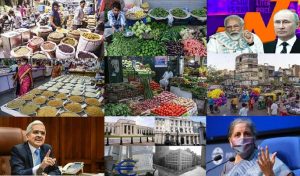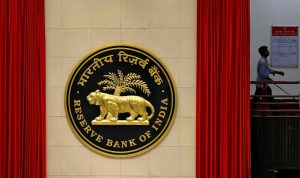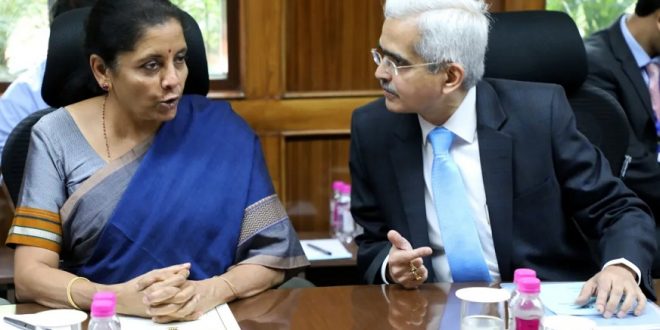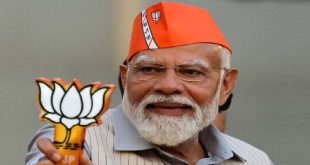06-04-2022
NEW DELHI: The Indian government did not apply the law when the country’s central bank breached the 2020 inflation target, documents accessed by The Reporters’ Collective (TRC) and Al Jazeera through the Right to Information Act show.
The Reserve Bank of India (RBI), under Governor Shaktikanta Das, was unable to keep inflation within the legally mandated limit of 6 percent for the three consecutive quarters between January and September 2020.
 Under Indian law, if the RBI fails to meet the inflation target for three consecutive quarters, it is required to write to the government within one month explaining why and produce a plan to bring prices back in line. This transparency is required to prevent businesses and citizens from losing faith in the RBI and the government’s ability to rein in inflation.
Under Indian law, if the RBI fails to meet the inflation target for three consecutive quarters, it is required to write to the government within one month explaining why and produce a plan to bring prices back in line. This transparency is required to prevent businesses and citizens from losing faith in the RBI and the government’s ability to rein in inflation.
However, the Ministry of Finance, with finance minister Nirmala Sitharaman’s approval, gave the central bank a pass, documents show.
It suggested the official inflation figures for the specific period had been estimated under constraints of a pandemic-induced lockdown, and hence were not reliable enough to be used for setting the interest rate, the ministry informed the RBI but, records show, these numbers had been endorsed at all levels of the government and its statistical agencies and had been used by the government for all other economic assessments.
What the finance ministry was worried about, as internal documents showed, was that the central bank would start hiking interest rates to control price rises at a time when the administration favored lower borrowing costs to revive the economy.
The finance ministry and RBI did not respond to a list of detailed questions sent by Al Jazeera.
As Prime Minister Narendra Modi put India into one of the world’s strictest lockdowns in 2020 to curb the spread of the coronavirus, inflation shot up on the back of supply shocks. In the process, the central bank missed its inflation target, a first since an independent monetary policy committee  (MPC) under the RBI governor was set up in 2016. The MPC was tasked with keeping the inflation levels in check (see Part 1) by setting the interest rates at which it lends money to banks.
(MPC) under the RBI governor was set up in 2016. The MPC was tasked with keeping the inflation levels in check (see Part 1) by setting the interest rates at which it lends money to banks.
The process
Under the law, the RBI is required to maintain the consumer price inflation at 4 percent but has some wiggle room with upper and lower limits of 6 percent and 2 percent. If inflation breaches this band for three consecutive quarters, it is legally considered RBI’s “failure”. Lower interest rates lead to more money in the economy, which in turn leads to inflationary pressures. The central bank reigns in inflation by adjusting the interest rate.
While framing the rules for the monetary policy framework in 2016, the RBI’s present governor, Das, who was the economic affairs secretary at the time, received a commitment from the RBI on the one-month deadline, according to the documents reviewed by TRC and Al Jazeera. The RBI was also in favour of making the accountability report public, according to communication between the RBI and the finance ministry in 2016.
“RBI has already conveyed its approval to submit such a[n accountability] report to the Central government within one month of the failure to meet the inflation target and also to place this report in public domain. Therefore, this provision has not been prescribed in the rules and may be dealt  with administratively,” Das wrote in a letter to then RBI Governor Raghuram Rajan on June 27, 2016.
with administratively,” Das wrote in a letter to then RBI Governor Raghuram Rajan on June 27, 2016.
Central banks in Indonesia, the Philippines, Brazil, the United Kingdom, New Zealand, Norway, and Turkey, among others, follow this practice of writing an open letter addressed to the government as a part of the accountability mechanism.
Post-COVID monetary policy
India’s inflation had started moving above the RBI’s target even before the March 2020 lockdown. The Consumer Price Index rose from 5.8 percent in October-December 2019 to 6.7 percent in January-March 2020, on average.
Within days of going into a nationwide lockdown, the RBI’s Monetary Policy Committee (MPC), following in the footsteps of its global peers, sharply cut the repo rate – the rate at which banks borrow from the RBI by 75 basis points to 4.4 percent in March. Another cut followed in May, taking the rate to a record low of 4 percent.
Around the same time, central banks of several emerging economies including Brazil, Mexico and South Africa, cut rates by more than 200 basis points to revive growth.
 Their average rates of inflation in 2020 remained mostly at pre-pandemic levels and, more importantly, within their respective central banks’ targets but in India, inflation remained high at 6.6 percent in April-June 2020, before rising even higher to 6.9 percent in July-September. Taken together with the January-March quarter of 6.7 percent, inflation would have breached the legal mandate of staying within 6 percent for three consecutive quarters.
Their average rates of inflation in 2020 remained mostly at pre-pandemic levels and, more importantly, within their respective central banks’ targets but in India, inflation remained high at 6.6 percent in April-June 2020, before rising even higher to 6.9 percent in July-September. Taken together with the January-March quarter of 6.7 percent, inflation would have breached the legal mandate of staying within 6 percent for three consecutive quarters.
The MPC when it met in August was aware that it was on the verge of breaching its legal mandate. In the meeting RBI deputy governor Michael Patra acknowledged inflation had risen “above the upper tolerance band” but the MPC decided to disregard the data for April through June, arguing that the statistics ministry had estimated those numbers through a different methodology called imputation
Building a case
In September, the finance ministry in an internal note, titled “Note on consequences of failure to achieve inflation target under Monetary Policy Framework”, defended the RBI’s actions and said because of the process of imputation, the inflation estimates were “artificially” overstated and were “unrealistic”. (Al Jazeera)
 Pressmediaofindia
Pressmediaofindia




